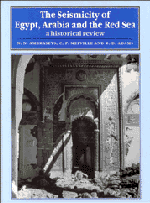2 - Macroseismic information
Published online by Cambridge University Press: 18 December 2009
Summary
In this chapter we present the macroseismic information retrieved and analysed according to the methods outlined earlier. In the first section (2.1), each earthquake is described as fully as possible from the available evidence. For the most part, commentary is confined to the footnotes, which attempt to resolve any conflicting information in the authorities cited, and illustrate how well each earthquake is documented. This itself can be an important consideration in reaching an acceptable assessment of the event in question. In general, if no reference is given to a primary source of information that appears in the Bibliography, this indicates that the work does not mention that particular earthquake. On the other hand, previous catalogues are not necessarily cited systematically, unless their entries require correction (see below).
For the period up to 1899, the catalogue includes all earthquakes in the area of interest for which felt reports have been retrieved, with the exception of those occurring in southern Iran, on the edge of the study region, which have already been listed in Ambraseys and Melville (1982, esp. pp. 161–2). As a rule, all the information available is presented for the early periods, largely translated directly from the Arabic sources. Less reliance is placed on sources written in Arabic in later periods, and there is a greater tendency to summarise the more voluminous information found in European sources, particularly for the nineteenth century. In the case of Ethiopia, our data are taken almost exclusively from Gouin's catalogue covering his regions A (Western Plateau), C (the Main Rift, Afar and Southern Red Sea) and D (Aden Western Sector).
- Type
- Chapter
- Information
- The Seismicity of Egypt, Arabia and the Red SeaA Historical Review, pp. 19 - 110Publisher: Cambridge University PressPrint publication year: 1994

